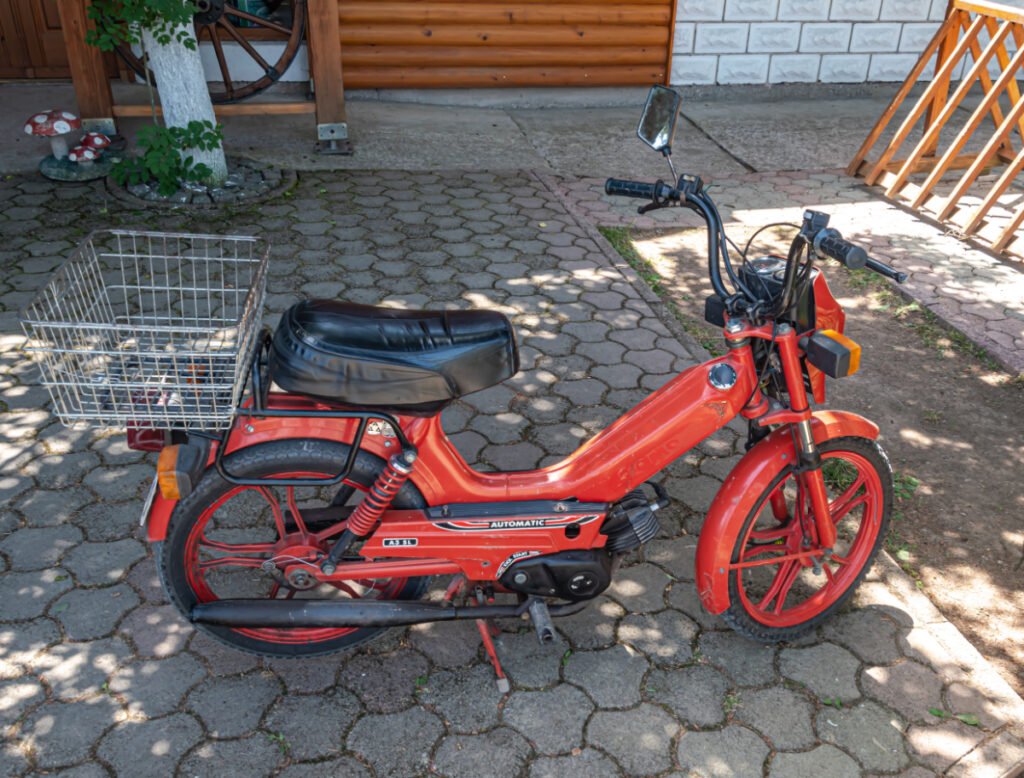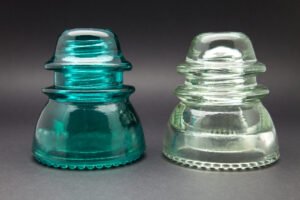If you are a bike buff who loves to flaunt his ‘Triumph,’ you’re definitely going to flip over for vintage bikes! In fact, any antique lover would love them because of their old-style single seats and tubed frames. People lovingly called them ‘mini-bikes’ for the same reason!
And it was not just one! There were different mini bikes for shows and travel, like street and sports bikes today. And those have different values today for collectors! So, let’s identify and appraise these vintage mini-bikes today! So, tighten your helmets and enjoy the ride!
Key Takeaways
- You’ll find all those manual features like levers, swing arms, centrifugal clutch, and drum brakes in old mini-bikes.
- There are two types of old mini-bikes: pit and street minibikes. Of these, the pit ones are racing bikes, costing up to $6000.
- Large and grooved knobby tires will fetch you the best returns. Also, look for crude 4-cycle or 2-cycle engines to hike the cost further.
- Avoid getting damaged or punctured bikes as they lose a lot of value. Also, don’t repaint or restore them too much.
Key Features of An Old Vintage Mini Bike

Identifying old mini bikes is just a matter of a few visual tests! First, look for any strapped single-person seats and tubed or welded frames. Next, see if you spot any padded handlebars and narrow tail lights. If yes, your minibike is a vintage one!
But if you are more into the tech and machine specs, here’s a technical list of features to check out:
- Metal rear swing arm and cylindrical twin shocks at the front and rear
- Pull-start and a single-cylinder, four-stroke gasoline pump
- Medium capacity engines (2.25 – 5 horsepower)
- Centrifugal clutch with low-speed and high-speed gears
- Small, drum brake with a foot pedal or hand lever
- Simple, straight handlebars with basic thumb throttles and grooves
A Quick History Lesson on Vintage Mini Bikes Evolution
Now, this might surprise you, but people weren’t serious about mini-bikes back then. In fact, most of the early bikes are DIY, with lawn mower engines and tubes. So, they were not that fast and effective. And what’s worse is that they had gripless moped tires!
Things changed when a local racer, Troy Ruttman, wanted such a bike! But he just didn’t like its speed and engine. So, he took help from the Michrina brothers and improved its frame and gas tank. And they even started a ‘Lil Mini Bikes’ brand to sell more of them!
In the next few years, i.e., in the 1960s and 70s, many vintage mini-bike brands rose and became popular. But each added a unique twist, like suspension, stroke engines, and foldable frames. So, the design was better than before!
But vintage mini-bikes continued to evolve even after that! And in the 1990s, they started using clutches, throttles, and tubed tires too. It’s just that this mass-production era lowered their demand and value.
8 Factors to Identify & Appraise Vintage Mini Bikes
Did you find out your bike’s base price above? Now let’s move to more details, brands, and engines to guess its resale value.

1. Antique Mini-Bike’s Date & Age
Unlike other antiques, vintage bikes are not from the 1700s. So, they won’t be handmade! But wait till you test their parts! The first minibikes used old parts of washing machines, not custom ones. So, these aren’t really collectible!
The in-demand ones started in the 1960s and continued until the 1980s. So, each has different features and costs. But how will you price them if you don’t know their era?
That’s where serial numbers will help you! All you need to do is check your bike’s serial number from its engine and note the last four digits. For example, if your bike’s serial number is 201962, it’s from the 1960s. If it’s 521997, it’s from the 1990s and so on.
But if the serial number label is not there, look for the following clues:
The 1960s Mini Bikes
The 1960s mini bikes were a mix of crude and high-tech features. On one hand, they use branded Tecumseh and Honda engines; on the other, they have straight iron frames, drum brakes, and small, spoked wheels. Even the handlebars were simply straight or bent.
But they also had some oxidized paints with natural red, green, or yellow pigments. So, depending on their condition, you can price them for $1000 – 6000.
The 1970s Mini Bikes
The 1970s minibikes had slightly evolved features. Like, they had 5 – 10hp engines, curved steel tubes, coil springs, and disc brakes. Plus, they had wider, fold-down handles and rear suspension levers for better grip. So, you can charge $700 – 400 for all such features.
The 1980s Mini Bikes
If your old mini motorcyle has a large, 10 – 20hp kickstart or electric engine and steel tube frames, it might be a 1980s model. Such bikes are more tech-savvy and have hydraulic brakes, air shocks, and dampers. But they are new and won’t cost over $3000 unless branded.
Pick vintage minibikes with low-lying, padded seats and sissy bar backrests for an old make.
2. Types of Mini Bikes
Old Pit Bikes
Imagine a miniature motorcycle with 4-cycle, 2.25 hp gas engines. Well, that’s what old pit bikes are! And what makes them valuable is their clutch, metal tube frame, and 4 – 6” rear wheel. But they don’t have any suspension and work on simple drum brakes.

Other than that, they also have tubed chains and frames that help in races. So, you can price them for $1900 – 6000.
Street Mini Bikes
These are small, single-cylinder models with shiny chrome bodies and accents for heavy street use. Also, these have three types of brakes – disc brakes, hand levers, and pedals. You’ll also see number plates and licenses, and you can price $1000 – 3000 for one.
3. Vintage Mini-Bike Engine Type
It’s true that mini-bike makers used old washing machine engines initially. But with time, they started developing them! See Tecumseh’s four-cycle engine, for example. It’s old and low-capacity but uses a shaft to pump gas. And it was just the start!
Today, we have many more mini-bike engines in the market! So, let’s see their features and which brands use them:
| Mini-Bike Engine Type | Top Features | Brands Examples | Estimated Price |
| 4-cycle, Single Cylinder | Gasoline-power, Horizontal crankshaft, 2 – 5 hp | Rupp Roadster, Briggs & Stratton | $2000 – 15,000 |
| 2-cycle, Single Cylinder | Gasoline plus Oil Power, Single-piston design, 2 – 3 hp | Fox minibikes, Yamaha | $1200 – 10,000 |
| Rotary Engines | Gasoline power, Triangular motor, Compact design, 3 – 5 hp | Suzuki, Norton | $2000 – 6000 |
Count the holes in your bike’s engine mounting plate or bracket. If they are less than 3, it’s an old pre-1960s engine, and vice versa.
4. Old Mini-Bike Tires
All those vintage mini-bike tires will surely be small and low-profile. But you’ll see some differences in their rims, treads, and bearings. And all these peculiarities naturally affect the cost of any old mini-bike. Let’s see how:
| Mini-Bike Wheel Type | Company Name | Top Features | Average Value (To be added separately) |
| Mini-bike Scooter Tires | Coker Tire Company | Sidewall markings, Rubber Compound walls, and Radial construction | $17 – 100 |
| Tread Tires | OMB Warehouse | Tube or Tubeless rubber walls, steel bearings, and sprockets | $20 – 70 |
| Knobby Tires | Go-karts USA | Rugged tread patterns and grooved surfaces | $40 – 80 |
Avoid getting mini-bikes with chipped, torn, or punctured tires, as those might devalue your bike. Also, use a tire gauge and maintain a 10 – 16 psi pressure.
5. Vintage Mini-bike Brands
If you want the best returns for your old mini-bike, make sure it’s branded! For that, check its logo and brand name or sign and find the average values based on popular mini bike brands from this table:
| Old Mini-bike Brands | Top Features | Estimated Resale Price |
| Rupp Roadster | 5-hp Tecumseh engine, centrifugal clutch, rear suspension, and tail lights | $1100 – 5000 |
| Taco Mini-bikes | Briggs & Stratton engines, drum brakes, and racing bikes | $700 – 2000 |
| Honda Motor Company | Made models such as Z50 and CT70 with full suspension and automatic clutch | $2000 – 5200 |
| Yamaha Motor Company | Produced bikes such as GT80 and PW50 with two-stroke engines and front suspension | $2000 – 4000 |
| Bonanza | Made models such as BC 1300, 1400, and 1500 with long choppers, forks, and banana seats | $1800 – 3000 |
Don’t know whether your mini motorcycle is branded or not? Here are some places to find the logo:
- Bike frame or handle stand
- Head tube or down tube
- Under the seats or carriers
- Tires or Handlebars
- Engines, Gears, and Levers
Try to get branded bikes with their original paints, stickers, and accessories for the best value.
6. Old Mini-Bike Frame Materials
Vintage mini-bikes with tubular cast iron frames cost more than those with sleek steel, zinc, or titanium frames. That’s because the steel ones are hollow and might lead to more friction and rust with age. In contrast, the iron ones are solid and durable.
7. Antique Mini-Bike Accessories

Vintage mini bikes have three accessories: fenders, mudguards, and lights. Of these, fenders and mudguards protect from dust and rain, whereas the lights are for visibility. So, if you get such a complete set, you can hike your bike’s cost by $500 – 1000.
8. Vintage Mini-Bike Condition
Antique lovers always look for original parts, paints, and seats when buying any mini-bike. So, if your mini-bike has broken frames or tanks, or if it’s restored, it might lose its value. Also, don’t add any additional lights or fenders if it’s not there in the model.
How Old Are Vintage Mini Bikes?
Vintage mini bikes were roughly made around the 1960s or 70s. So, the oldest models are about 53 – 63 years old.
What’s the CC of a Vintage Mini Bike?
Vintage mini bikes usually use a 40 – 50cc engine, but the rare, branded ones might go even up to 120cc.
How Fast is a Regular, 4-Stroke Mini Bike?
Old, 4-stroke mini bikes aren’t that fast and can race up to 20 mph. Other than that, they have a 27-mile mileage and a crude pull starter.
Are Old Mini Bikes Safe to Use?
Yes, old mini bikes are usually safe to use unless their steel bodies crack or rust. But don’t forget to check the engine’s heating or smoke emissions, as it might get too hot and burst.
You might love vintage mini-bikes for their old, unique frames and tires. But trust me! You can recover all your money by searching for unique features. I mean, look for their brands, materials, and accessories to hike the value. And you anyway have our guide for reference!
Also, if you want to identify such technical antiques like pedal cars, go-karts, or car jacks, join us now!
Note: This article is intended for informational, educational, and entertainment purposes only. Some images are illustrative and may not represent actual brands, products, or related entities. All trademarks, product names, brand logos, packaging, and other intellectual property referenced remain the exclusive property of their respective owners. Any brand mentions or references are provided solely for descriptive and educational context and do not imply any formal or commercial association.









